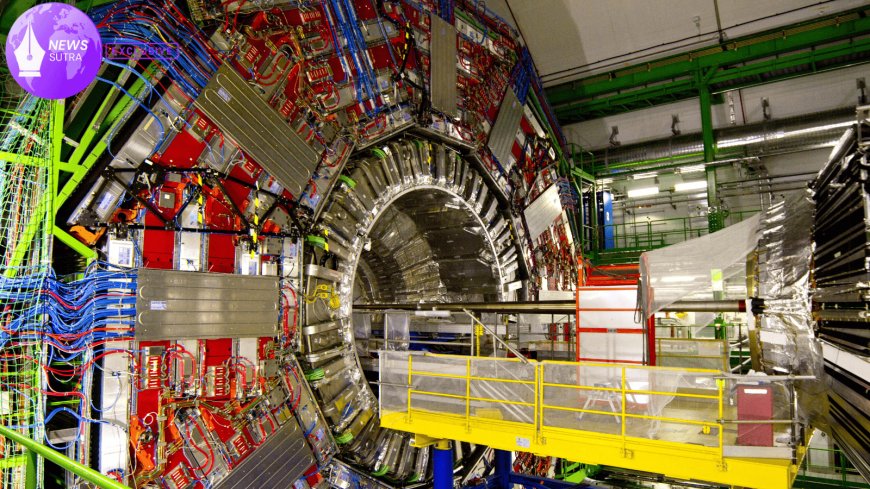Beyond CERN: America’s Next Particle Collider Revolution
As CERN’s Large Hadron Collider dominates headlines, U.S. labs like Fermilab are quietly shaping the future of particle physics with next-generation accelerators.

When the Large Hadron Collider (LHC) in Switzerland confirmed the discovery of the Higgs boson in 2012, it cemented CERN’s reputation as the world’s leading particle physics hub. But while Europe often dominates headlines, the United States is quietly preparing its own collider revolution — one that could redefine how we probe the fundamental nature of matter and energy.
From Fermilab’s Deep Underground Neutrino Experiment (DUNE) to next-generation compact accelerators, U.S. laboratories are betting on a more cost-efficient, specialized approach to particle physics. The story of “what comes after the LHC” may not be written in Geneva, but in Illinois and beyond.
The End of an Era for the LHC?
The LHC remains the most powerful particle accelerator on Earth, smashing protons together at nearly the speed of light. But more than a decade after its Higgs discovery, critics argue that the collider is reaching diminishing scientific returns.
While upgrades are underway, the next leap in physics — such as discovering dark matter particles, supersymmetry, or extra dimensions — may require new tools and fresh strategies.
This is where U.S. labs are stepping in with bold alternatives.
Fermilab: America’s Particle Physics Flagship
Located just outside Chicago, Fermilab has long been the beating heart of U.S. high-energy physics. Though it shut down its famed Tevatron collider in 2011, Fermilab is now spearheading experiments that look beyond proton collisions.
-
DUNE (Deep Underground Neutrino Experiment): A $3 billion project that will send a beam of neutrinos from Fermilab to detectors buried 800 miles away in South Dakota. The goal? To understand why the universe is made of matter and not antimatter.
-
Muon g-2 Experiment: Measuring the magnetic properties of muons, which could point to physics beyond the Standard Model.
-
Future Circular Collider Concepts: Fermilab scientists are actively contributing to global designs for colliders that could dwarf the LHC in scale and energy.
Unlike the LHC, which focuses on smashing protons at maximum energies, Fermilab’s projects are designed to answer narrower, but deeper questions about the universe.
Compact Accelerators: The American Bet on Efficiency
One of the most exciting developments in U.S. physics isn’t just bigger colliders — it’s smaller, smarter ones. Using advanced techniques like plasma wakefield acceleration, scientists are exploring how to shrink machines that once spanned miles into facilities that could fit inside a warehouse.
Researchers at SLAC National Accelerator Laboratory in California recently demonstrated plasma-based accelerators that achieve energy gradients hundreds of times greater than conventional machines. If scalable, this could reduce both the cost and physical footprint of future colliders.
According to the U.S. Department of Energy’s Office of Science, compact accelerators could revolutionize not only fundamental physics but also medical imaging, cancer treatment, and materials science.
America’s Role in Global Collaboration
The U.S. is not operating in isolation. American scientists remain heavily involved in CERN projects while simultaneously pushing their own agenda at home. This dual-track approach — contributing to global megaprojects while innovating in smaller, targeted experiments — could position the U.S. as a bridge between big science and practical applications.
For example, the American Physical Society has emphasized that both large international collaborations and smaller domestic experiments are essential to maintain U.S. leadership in physics.
Challenges Ahead
The American collider revolution faces its own hurdles:
-
Funding Battles: Large-scale science in the U.S. often collides with political gridlock and budget uncertainty.
-
Public Awareness: Unlike space exploration, particle physics struggles to capture public imagination, making it harder to sustain support.
-
International Competition: With China proposing its own massive collider, the U.S. risks losing momentum if funding falters.
Still, many physicists argue that America’s diversified strategy — combining neutrino experiments, muon studies, and compact accelerator research — could be the smarter long-term play.
Conclusion: Beyond the LHC
The Large Hadron Collider may have grabbed the spotlight, but the future of particle physics could just as easily be shaped in the United States. By investing in neutrino research, pioneering compact accelerators, and sustaining international collaboration, America is quietly staging a particle collider revolution of its own.
The next big discovery — whether it’s dark matter, new forces of nature, or cracks in the Standard Model — may not come from the largest machine on Earth, but from a lab in Illinois, California, or even underground in South Dakota.
What's Your Reaction?
 Like
0
Like
0
 Dislike
0
Dislike
0
 Love
0
Love
0
 Funny
0
Funny
0
 Angry
0
Angry
0
 Sad
1
Sad
1
 Wow
0
Wow
0








































































